Forest restoration with birds in mind
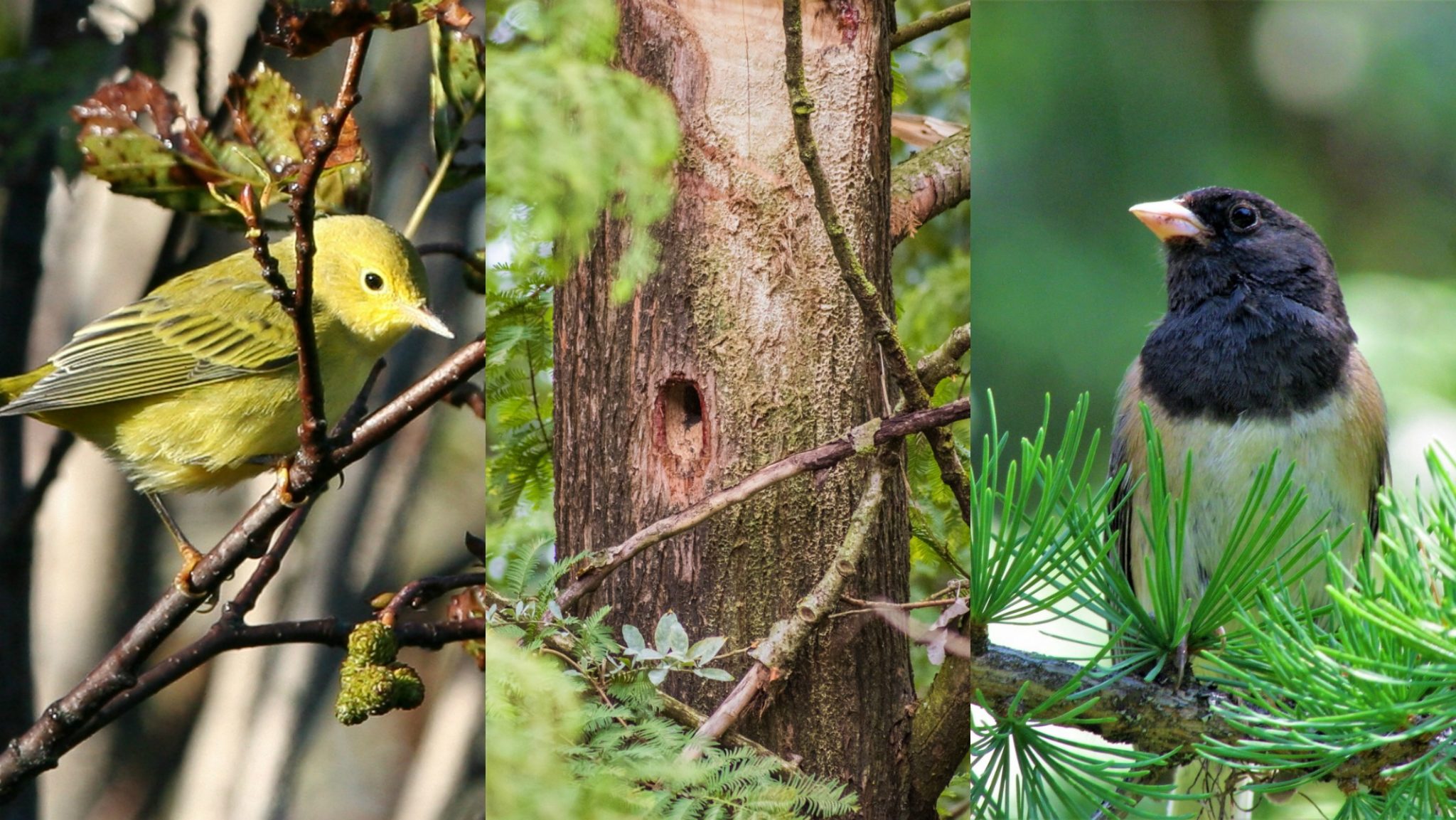
Time your stewardship activities to minimize stress to breeding birds.
When it comes to to removing invasive species, caring for vegetation, and creating habitat features to grow ecologically-complex and productive forests, the timing of that work makes all the difference to the survival of our feathered friends.
But before I go into the details about bird-friendly restoration practices – I want to give some praise and recognition for NNRG’s amazing members and partners that helped put together these bird-minded restoration practices shared below.
Our Forest Stewardship Council-certified member Seattle Parks and Recreation and their partners in the Green Seattle Partnership do an extraordinary job caring for 2,500 acres of forest across the city. Part of their program provides educational opportunities to their volunteer Forest Stewards to hone skills to help seedlings survive, identify shrubs in the winter, or prune vegetation to make trails feel safer. Sometimes there is an extra space in one of these trainings and I’ll tag along.
Last August, I had the opportunity to join several Forest Stewards for a bird habitat consultation at Lewis Park Natural Area in Seattle’s Beacon Hill neighborhood. This 5-acre forest is situated close to the interstate crossroads of I-5 and I-90 on the outskirts of downtown skyscrapers and the industrial hub. Lewis Park is most certainly an urban forest.
Over the years, dedicated Forest Stewards, community groups, and neighbors have worked hard to reclaim the forest from invasive species, abandoned furniture, and other garbage. They’ve put in long hours to plant native trees and shrubs, plan for safe and welcoming trails, and make the park part of the community.
Today, Lewis Park is a natural area supporting a rich diversity of native trees and shrubs, snags and down wood, pollinator habitat, and abundant signs of use from birds and other wildlife. In fact, on that hot, smoky, late afternoon last August – we saw sign of four of the five species of woodpeckers that live around Puget Sound, osprey and eagles flew overhead, and song sparrows were darting about the ground. Clear indicators that Lewis Park is a natural oasis, refuge, and connector of wildlands that span the lowlands of the Puget Trough up to the Cascades. It is a jewel of an urban forest!
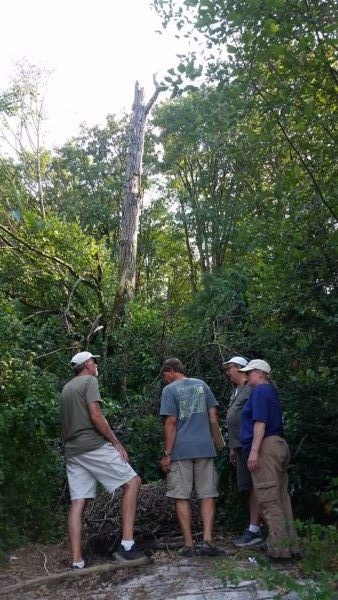
Ed Dominguez, Lead Naturalist with Seward Park Audubon Center and local rockstar of Northwest natural history, provided the bird habitat insights. We walked the woods to get a sense of habitat features that appeal to birds and how they use them, looked for signs of nesting activity, and generally admired the forest. Ed provided recommendations about how to do restoration work in ways that are less disruptive to birds. Here’s what we learned:
Restoration best practices with birds in mind
1. Diversity makes for rich habitat
To attract a variety of birds and wildlife, forests need to have:
- snags and down logs;
- vegetation of different heights, cover types, and canopy gaps (skips and gaps, with some areas undisturbed);
- vegetation that provides flowers, fruit, and mast; and
- an abundance of invertebrates, insects, and other pollinators.
A forest with a wide and abundant assortment of native tree and plant species with structural complexity helps supply the varied food sources and cover preferences attractive to different bird species.
Forests with varied canopy layers – that include trees and snags in the upper canopy and mid-canopy, shrubs and vines in the understory, and herbaceous plants on the ground – makes for habitat with greater foraging, cover and nesting resources. Some research has shown that forests with extensive invasive plant species and simple structure have less abundant populations of native forest birds – possibly because these forests provide less food sources, less continuous cover, and increased likelihood of predation.
2. Keep the three cycles of nesting in mind
As you plan to do work in your forest consider the nesting, young-rearing, and foraging needs of birds and other wildlife.
Nesting season is a particularly energy-intensive time for birds. They are working hard and expending energy to build nests, lay eggs, protect chicks, and forage or hunt to feed young. While predation is the most frequent reason for nests to fail; direct disturbances near a nest site or changes to habitat after the nest sites are selected can cause birds to abandon their nests and offspring. Sometimes, restoration and stewardship activities can be the direct disturbance or alteration of habitat that causes birds to abandon a clutch. Keeping the life history of birds in mind can make all the difference. In the Northwest, there are generally three cycles to the nesting season, which goes from February to August.
The three cycles of nesting:
- Early February to mid-April is the early breeding season when our resident birds are getting a head start on nesting before the migratory song birds arrive. Year-round residents include herons, geese, owls, eagles, hawks, falcons, as well as hummingbirds.
- April to mid-June is the primary breeding season for migratory song birds and resident birds may be rearing a second clutch.
- Mid-June to the end of August is the late breeding season the time when resident and migratory birds are rearing their second and third clutches, though some birds like the willow flycatcher are late nesters and will not complete reproductive activity until the end of August.
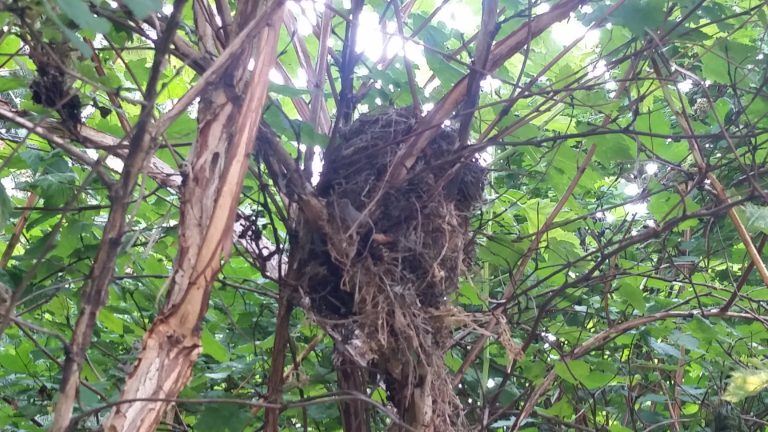
Sometimes restoration work has to take place during the breeding season. While this is a short-term stressor for birds during that particular breeding season, it’s a tradeoff for improving overall habitat in the long run.
Different birds can be more tolerant of some activities than others – site monitoring, planting, girdling trees, or targeted herbicide treatments are less disturbing to some species. Weeding, mowing, pruning, watering, and thinning are more activity intensive – bringing people and noisy equipment closer to nests and altering the vegetation structure and composition.
The Green Seattle Partnership and Audubon Washington developed bird-friendly restoration practices for common Puget Sound area species. Check out the appendices about breeding birds associated with specific forest types and habitat management guidelines to get a sense of what’s recommended for specific species.
Prior to starting restoration work, it’s a good idea to take some time to observe and document the area looking for active nests with eggs or young. If you do find active sites within in the restoration area, try to avoid activities until the young have fledge, or at least give them a minimum 100-foot buffer (note: different bird species have different tolerances for activity, some birds need more than 100 feet).
Generally speaking, August through January is the least impactful time of year to do restoration work. By August, most species have completed their reproductive activities and are far enough along that they can tolerate greater disturbance. This is the time when birds are able to tolerate changes to their habitat such as tree and invasive species removal.
3. Become aware
As you enter the area in your forest you plan to work in – stop and pay attention to what the birds are doing. This will take some time, you will need to be quiet and make few movements. After 10 to 15 minutes the birds in the area will transition from “alarm call mode” and return to their other actives. Stop, look, and listen.
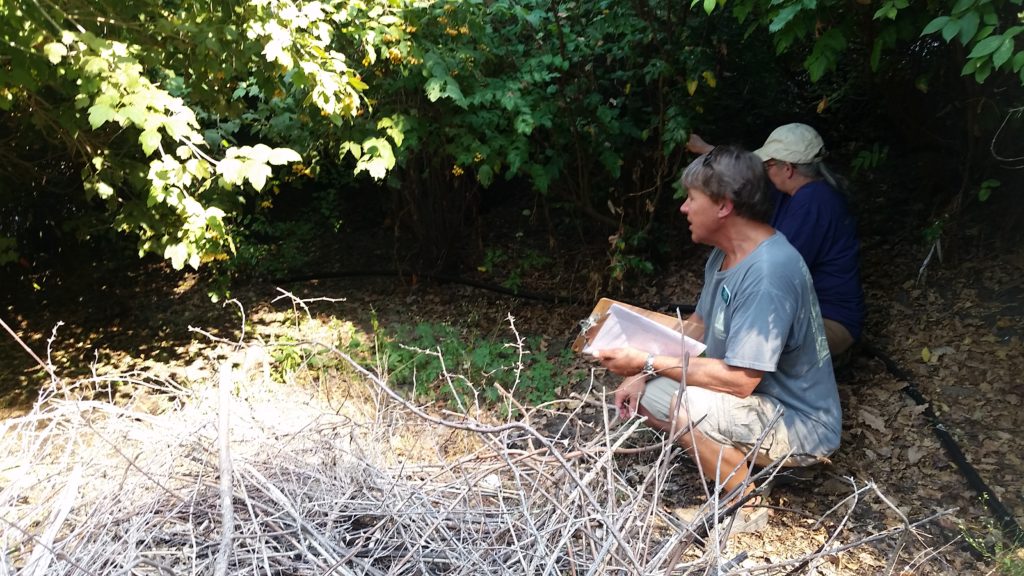
4. Use your powers of observation
When the birds do adjust to your quiet and still presence in the forest, observe what they are doing. Pay attention to what birds are doing at the ground level (less than 4 feet), in the mid-story (about 4-20 feet), and in the canopy (about 20 feet and above).
Some questions to prompt your observations:
- Are birds coming and going from one particular spot?
- Are they carrying anything with them?
- If they are:
- Does it look like nest building material?
- Does it look like food?
- If they are:
- Are they foraging?
- Are they going back and forth to a particular food source?
- Are they displaying territorial behavior?
- Are they flying in or out of a nest?
- Do you see a nest?
- Look for depressions on the ground or at the base of trees or shrubs used by ground nesters.
- Look for cup nests in branches, shrubs, and trees used by mid-story nesters.
- Look for holes and crevices in dead, dying, or live trees – including the root structures – used by cavity nesters.
5. If you see a nest
If there are birds in the area you’re planning to work in and it’s nesting season – try to give the birds space to do their thing. They are busier than we are and working hard to raise their young so they can fledge!
Make note of these nesting, foraging, and high activity areas. If possible, plan to come back in August or September to work in these areas after most birds have fledged and many migratory birds have started to fly south. If you do have to do work while there is an active nest site nearby, try to work 100 feet away from nest sites or foraging areas. As well, stay out of the birds’ flight paths to and from the nest and foraging areas.
If it’s the nesting season and you don’t see nesting activity or repeated foraging activity – it’s probably okay to carry out the work you were planning to do.
By continuously enhancing your understanding of the life history of different bird species and what comprises diverse productive forest ecosystems you will be better equipped to make decisions and do restoration activities that create habitat for birds and other wildlife. Over the years may you enjoy much time in healthy, beautiful forests rich with bird song.
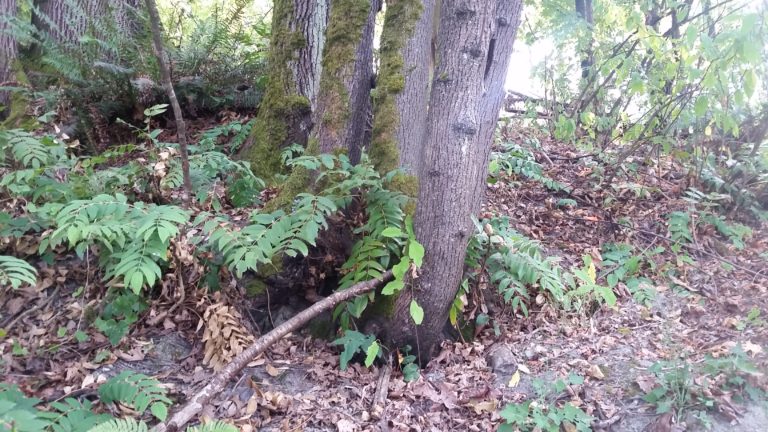
Here are some resources about ways to improve habitat for birds and other wildlife
- Audubon Native Plants Database – helps identify regionally-specific native plants that support bird communities
- Diversifying Forest Structure to Promote Wildlife Biodiversity in Western Washington Forests – Washington State University Extension, a manual about forest management strategies and techniques to help attract and support a variety of wildlife species
- Forest Parkland Restoration Planning Related to Breeding Birds in Seattle – Green Seattle Partnership and Audubon Washington, practices to minimize impacts to birds and improve habitat while carrying out restoration work
- Habitat Conservation for Landbirds in Coniferous Forests of Western Oregon and Washington – Oregon-Washington Partners in Flight, American Bird Conservancy, and Klamath Bird Observatory, recommendations at the landscape-scale to the stand level to support healthy bird populations
- Landscaping for Wildlife in the Pacific Northwest – by Russell Link, WDFW, provides extensive resources to help select, arrange, and maintain plants and other landscape elements that fulfill wildlife needs
- Living with Wildlife in the Pacific Northwest – by Russell Link, WDFW, information to promote coexistence in forests, gardens, ponds, homes, and other places where humans and wildlife cross paths
- Native Pollinator Habitat Restoration Guide – Earthcorps, recommendations to enhance pollinator habitat in the Puget Sound region
- Pollinator Conservation Resources – Xerces Society, a starting place to navigate toward extensive resources learn more about pollinators, identification, plant lists, and best practices
- Woodland Fish and Wildlife – a collective resource put together by state agencies, conservation districts, extension, forest owner associations, publications geared toward family forest owners and land managers

Leave a Reply